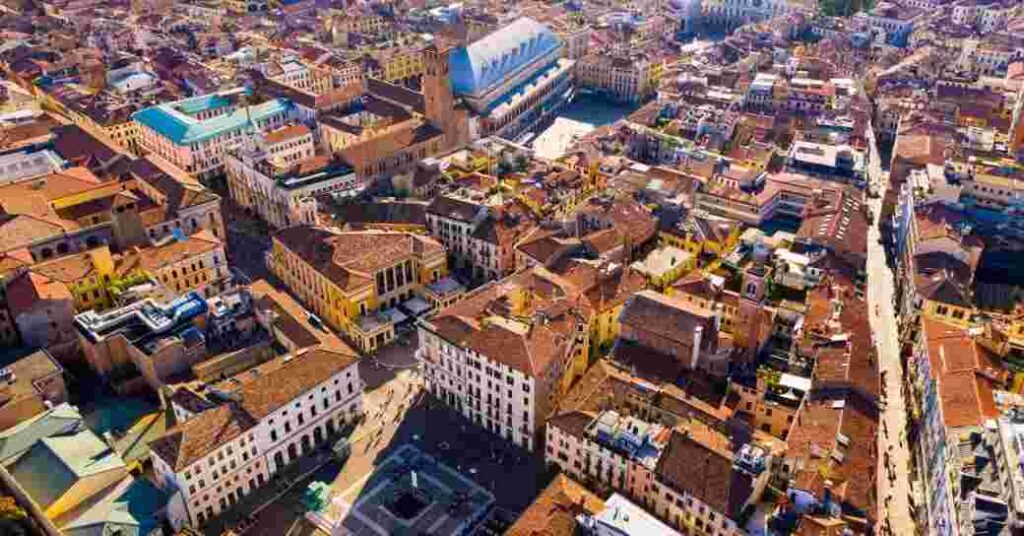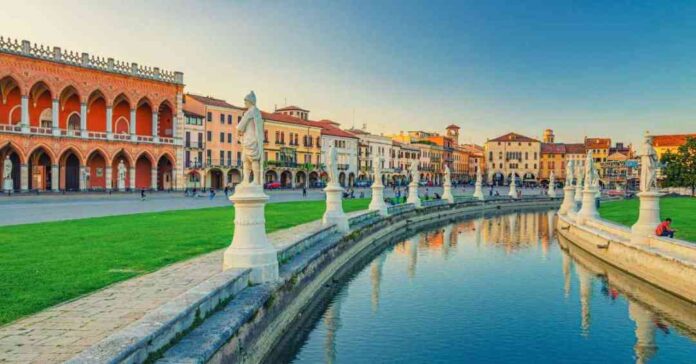This article gives you a detailed information about One Day In Padua. Padua (Padova in Italian) stands as one of Italy’s most enchanting yet often overlooked cities. This historic gem in the Veneto region combines rich cultural heritage with vibrant modern life, making it an ideal destination for travelers seeking authentic Italian experiences without the overwhelming crowds of Venice or Florence. With its prestigious university, magnificent religious sites, and remarkable artistic heritage, Padua offers visitors a perfect blend of historical significance and contemporary Italian lifestyle.
How to Get to Padua

From Venice and Nearby Airports
- Venice Marco Polo Airport offers direct bus connections to Padua
- Take the ATVO Mestre Express to Venice Railway Station, then catch a train to Padua
- High-speed trains connect Venice to Padua in approximately 30 minutes
- Milan’s airports also provide convenient access with regular train services
By Train
- Padua’s central station serves as a major hub in the Veneto region
- Well-connected to major cities including Venice, Milan, Florence, and Rome
- The station’s proximity to the city center makes it ideal for day trips
By Car
- Accessible via the A4 motorway between Turin and Trieste
- Multiple parking options available around the city center
- Perfect stop during a Northern Italy road trip
Getting Around Padua
Padua offers several transportation options:
| Mode of Transport | Benefits | Best For | Operating Hours |
|---|---|---|---|
| Walking | Free, most attractions within walking distance | City center exploration | Anytime |
| Tram (SIR1) | Connects north to south, passes major sites | Longer distances | 6:30 AM – 12:30 AM |
| Bus Network | Comprehensive coverage | Reaching outer areas | 5:30 AM – 11:30 PM |
| Hop-on Hop-off Bus | Includes commentary, 24-hour ticket | Tourist orientation | 9:00 AM – 6:00 PM |
Must-See Attractions
Padua’s rich history is reflected in its stunning landmarks and architectural marvels. The city boasts a blend of medieval and Renaissance structures that have shaped its unique character over centuries.

1. Scrovegni Chapel
The crown jewel of Padua’s artistic heritage, this UNESCO World Heritage site showcases Giotto’s revolutionary frescoes from 1303-04. Important Note: Advance booking is mandatory, with reservations required at least 48 hours ahead.
2. Basilica of Saint Anthony
Known locally as “Il Santo,” this remarkable basilica serves as Italy’s most significant pilgrimage site. Features include:
- Byzantine and Romanesque architectural styles
- Donatello’s bronze reliefs and statues
- The Chapel of Relics
- Multiple museums accessible with a single ticket
3. Palazzo della Ragione
This medieval marvel houses Europe’s largest hall without supporting columns. Highlights include:
- Hundreds of vivid frescoes
- An 800-year-old ground floor market
- Connection to two historic squares
[Embedded YouTube video about Palazzo della Ragione and its historical significance]
4. Prato della Valle
Europe’s largest square offers:
- 90,000 square meters of space
- 78 statues surrounding the central island
- Regular markets and events
- Perfect spot for people-watching
Cultural Experiences and Education
Padua’s rich academic heritage and cultural institutions offer visitors a deep dive into centuries of knowledge and art. The city’s renowned university and diverse museums showcase its intellectual prowess and artistic legacy.
Caffè Pedrocchi
This historic café, known as the “café without doors,” offers:
- Signature mint coffee experience
- Rich historical significance
- Beautiful period rooms
- Regular cultural events
University of Padua
Founded in 1222, the University of Padua is the second-oldest university in Italy. Its historic buildings are scattered throughout the city center, creating a unique university town atmosphere. The Palazzo Bo houses the famous Anatomy Theater, where public dissections were once performed. Galileo Galilei taught here from 1592 to 1610, furthering his groundbreaking scientific theories.
The university’s Botanical Garden, established in 1545, is the world’s oldest academic botanical garden still in its original location. A UNESCO World Heritage site, it contains over 6,000 plant species. Visitors can explore its historic layout and modern Biodiversity Garden.
Padua’s Museums
Padua boasts several museums that highlight its artistic and cultural heritage. The Musei Civici Agli Eremitani complex houses archaeological artifacts and medieval to modern art collections. Its extensive exhibits include works by Giotto, Titian, and other renowned artists.
The Jewish Museum of Padua offers insights into the city’s Jewish history. Located in the former Ancient Jewish Ghetto, it displays religious artifacts and documents the community’s life from the Middle Ages onward. The museum’s proximity to the 16th-century synagogue provides a comprehensive view of Padua’s Jewish cultural legacy.
Where to Stay
Budget: Hotel Casa del Pellegrino
- Located near Basilica of Saint Anthony
- Convenient bus access
- Two on-site restaurants
- Rooms for 1-4 people
Mid-Range: Hotel Grand’Italia
- Near train station
- Classic Italian decoration
- Complimentary breakfast
- Spacious rooms
Luxury: NH Padova
- Central location
- Panoramic restaurant
- Fitness center
- Personalized concierge service
Artistic Heritage
Padua’s artistic legacy is defined by groundbreaking frescoes and Renaissance masterpieces. The city’s churches and chapels house some of Italy’s most significant artworks, showcasing the evolution of Italian art from the late Middle Ages through the Renaissance.
Giotto’s Legacy
Giotto di Bondone’s revolutionary frescoes in the Scrovegni Chapel mark a pivotal moment in Western art history. Completed in 1305, these vivid biblical scenes demonstrate Giotto’s innovative use of perspective and naturalism. The chapel’s interior is covered in 38 fresco panels depicting the lives of Christ and the Virgin Mary.
Giotto’s influence extends beyond the Scrovegni Chapel. His style inspired generations of artists who followed, shaping the direction of Italian art for centuries to come.
Renaissance Art
Padua’s artistic heritage continued to flourish during the Renaissance. The Basilica of St. Anthony houses important works by Donatello, including bronze statues and reliefs. These sculptures showcase the artist’s mastery of human anatomy and emotional expression.
Andrea Mantegna’s frescoes in the Ovetari Chapel of the Church of the Eremitani once rivaled Giotto’s in importance. Though largely destroyed in World War II, the remaining fragments still hint at Mantegna’s innovative use of perspective and classical themes.
Padua’s art and architecture blend medieval and Renaissance styles, creating a unique visual tapestry throughout the city. From Giotto’s groundbreaking frescoes to Donatello’s sculptures, Padua offers a rich artistic journey through Italian history.
Leisure and Lifestyle
Padua offers a rich tapestry of culinary delights, vibrant markets, and lush green spaces for visitors to enjoy. The city’s leisure scene blends historical charm with modern amenities, providing a perfect backdrop for relaxation and exploration.
Local Cuisine and Markets
Padua’s culinary landscape is a feast for the senses. The Piazza delle Erbe and Piazza della Frutta host bustling markets where locals and tourists alike can sample fresh produce and regional specialties. These squares come alive with colorful stalls and the aroma of traditional dishes.
Visitors can indulge in Paduan classics like bigoli pasta or sample the city’s famous Aperol Spritz, which originated here. The markets offer an array of cheeses, cured meats, and seasonal fruits.
For a true taste of Padua, try the risotto al radicchio or the baccalà alla vicentina, a salt cod dish. Local wines from the Veneto region pair perfectly with these delicacies.
Outdoor Attractions and Gardens
Padua boasts numerous green spaces ideal for leisurely strolls and picnics. The crown jewel is the Orto Botanico di Padova, the world’s oldest academic botanical garden, established in 1545. This UNESCO World Heritage site showcases a vast collection of plants and historic greenhouses.
The Prato della Valle, Italy’s largest square, offers a picturesque setting for relaxation. Its elliptical shape is adorned with statues and a central island surrounded by a canal, perfect for people-watching or enjoying a gelato.
For a serene escape, visitors can take a boat trip along the Brenta River. The route is lined with stunning Venetian villas, including the opulent Villa Pisani.
Frequently Asked Questions
How long should I spend in Padua?
While you can see major highlights in one day, 2-3 days allows for a more relaxed experience and deeper exploration of the city’s culture.
Is Padua a good base for visiting Venice?
Yes! Padua offers more affordable accommodation and is just 30 minutes from Venice by train, making it an excellent base for day trips.
Do I need to book attractions in advance?
The Scrovegni Chapel requires advance booking, but most other attractions can be visited without reservations.
What’s the best time to visit Padua?
Spring (April-May) and fall (September-October) offer pleasant weather and fewer tourists. Summer can be quite hot, as experienced by many visitors.
Is Padua walkable?
Yes, Padua is very walkable. The historic center is compact, and most major attractions are within a 20-30 minute walk of each other. The city also features many beautiful covered walkways (portici) that protect pedestrians from rain and sun.
What’s the “spritz” everyone talks about in Padua?
The spritz is the most popular aperitif in northeastern Italy, especially in the Veneto region. In Padua, it’s traditionally enjoyed in the early evening in the squares and the Ghetto area. While originally just white wine and sparkling water, today’s version typically includes a bitter liqueur (like Aperol or Campari) and prosecco.
When is the antiques market in Prato della Valle?
The antiques market takes place on the third Sunday of every month. The regular market happens every Saturday, but this can make it harder to appreciate the square’s historical beauty due to the crowds and stalls.
What are some typical local dishes to try in Padua?
Key local specialties include:
Bigoli in salsa (thick spaghetti in anchovy sauce)
Risotto al nero di seppia (squid ink risotto)
Baccalà alla vicentina (salted cod)
Fegato alla veneziana (Venetian-style liver)
Dolce del Santo (a traditional sweet dedicated to St. Anthony)
Are the botanical gardens worth visiting?
Yes, the Orto Botanico is absolutely worth visiting. As the world’s oldest academic botanical garden (established 1545), it’s a UNESCO World Heritage site and houses an impressive collection of historic and rare plants, including a palm tree from 1585 and a ginkgo tree from the 18th century.
Is Padua expensive compared to other Italian cities?
Padua tends to be more affordable than nearby Venice and other major Italian tourist destinations. Accommodation, dining, and shopping prices are generally lower, making it an excellent base for exploring the Veneto region while staying within budget.
Planning Tips
- Visit the Scrovegni Chapel early in the day
- Explore markets in Piazza delle Erbe and Piazza della Frutta in the morning
- Experience Prato della Valle during sunset
- Avoid Saturday mornings if you don’t want to encounter the main market crowds
This guide provides a comprehensive overview of Padua, but the city’s charm lies in discovering its hidden corners and local life. Whether you’re interested in art, history, religion, or simply enjoying authentic Italian culture, Padua offers something for everyone while maintaining its genuine character away from mass tourism.
Visit stayvibes.com for more such articles.

